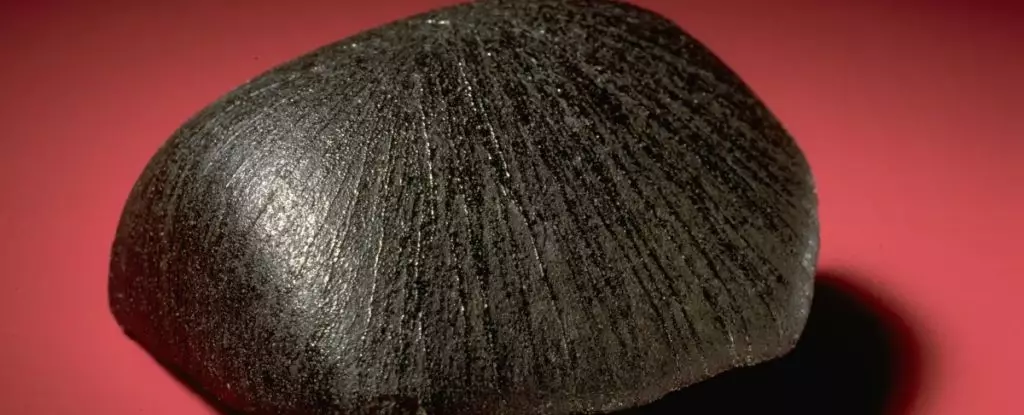The Red Planet has long captivated scientists and the public alike with its storied past and ongoing mysteries. Once believed to be a vibrant world characterized by lakes and perhaps even oceans, Mars is now more commonly imagined as a dry and unwelcoming landscape. Recent findings, however, indicate that the planet may have retained traces of liquid water far more recently than previously thought. A recent study involving the Lafayette Meteorite—ejected from Mars around 11 million years ago—offers crucial insights into the planet’s hydrological timeline, raising questions about both ancient and contemporary geological processes on Mars.
Meteorites play a critical role in our understanding of extraterrestrial bodies, providing vital clues about their compositions and histories. The Lafayette Meteorite, in particular, has become the focal point for research on Mars’ watery past. Analysis reveals that certain minerals within the meteorite formed in the presence of liquid water approximately 742 million years ago. This discovery underscores the complexity of Mars’ history, suggesting that while vast bodies of water may not have existed, intermittent sources of liquid water likely played a role in shaping the planet’s surface.
Geochemist Marissa Tremblay of Purdue University states that determining the age of these minerals is essential in understanding when liquid water was present on the Martian surface. This evidence hints at the existence of conditions favorable for water, albeit in limited quantities rather than an abundance. The water responsible for the formation of these minerals is theorized to have originated from melting permafrost, likely triggered by volcanic activity on Mars—suggesting that geological processes capable of generating moisture could still be active today.
The methods used to date the minerals within the Lafayette Meteorite exemplify the advancements in geochemical techniques that have emerged in recent years. Traditional radiometric dating often involves measuring isotopes like argon, sourced from the decay of potassium. In the case of the Lafayette Meteorite, researchers leveraged the ratio of argon isotopes to backtrack the timeline of aqueous mineral formation. Remarkably, their approach demonstrated minimal impact from external factors—including the meteorite’s fiery passage through Earth’s atmosphere—allowing them to obtain a reliable dating record.
This meticulous methodology is indicative of a broader trend in planetary science: enhancing our ability to analyze extraterrestrial materials can yield insights with implications that extend beyond Mars to other bodies within the Solar System. The potential for similar discoveries about asteroids and moons is immense, raising the question of how often—and when—liquid water might have played a role in shaping extraterrestrial environments.
Intriguingly, the period correlated with the evidence of water—742 million years ago—also coincides with increased volcanic activity on Mars. Contemporary analysis reveals that the quiet surface of Mars may mask a more tumultuous geological undercurrent. The Mars InSight lander has recently highlighted a series of seismic events originating from within the planet, adding layers to an already complex narrative of Martian geology.
This association between volcanic activity and the presence of liquid water offers critical insights into how Mars may have evolved over millennia. The findings compel us to consider that, while the planet is often perceived as dormant, it is engaged in a series of geological transformations that could affect its capacity to host liquid water, whether transiently or for more extended periods.
Beyond its significance to our understanding of Mars, the techniques utilized in this research open up an avenue for probing the long-standing questions surrounding Earth’s own hydrological origins. If Mars once held waters with such unique timelines, could similar meteorite studies provide insights into how Earth acquired its oceans? In piecing together the cosmic puzzle of liquid water in the universe, the implications are far-reaching.
Ultimately, the investigation of the Lafayette Meteorite paves the way for a more nuanced understanding of planetary processes across the Solar System. As scientists continue to unravel the mysteries of Mars and its hydrological history, the potential exists to redefine our previously held conceptions of planetary climates and the processes that govern them. Answers about the history of water on Mars may one day lead us closer to understanding the broader narrative of liquid water in the cosmos—a key ingredient for habitability and life as we know it.

